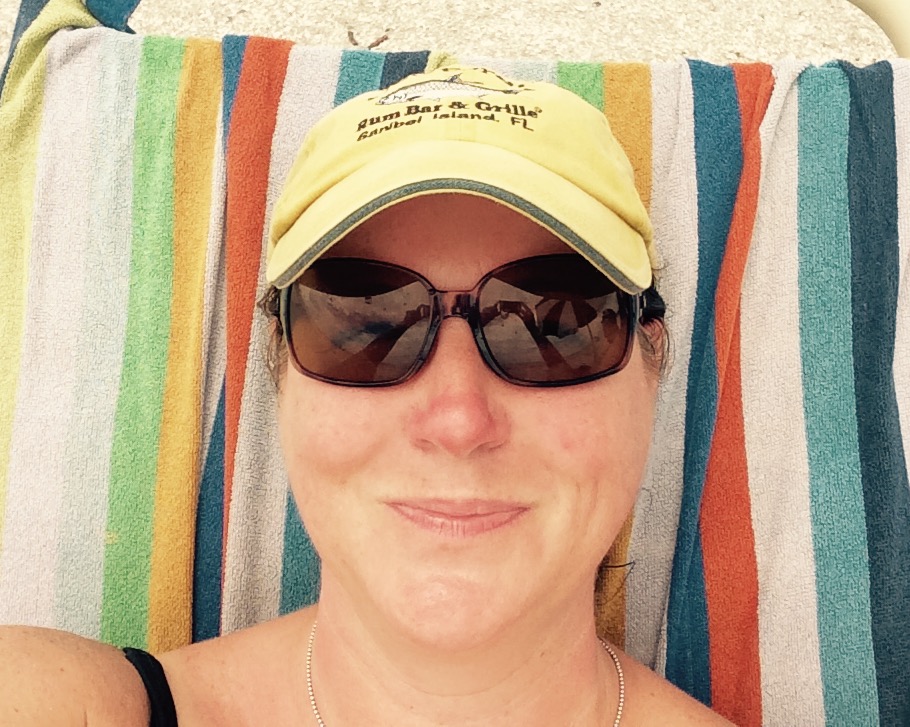
Carrie Easley
Reputation Activity
-
 Carrie Easley reacted to Dansket in Return and Reissue of components
Carrie Easley reacted to Dansket in Return and Reissue of components
This flowchart represents our requirements for handling blood components returned unused by Nursing.
There are three (3) basic elements: 1) Appearance, 2)Temperature, and 3) Time out of storage. If the visual inspection of the component does not reveal any unusual observation(s) and the component is within acceptable temperature limits and the component has not be out of storage for more than 30 minutes then the blood component may be reissued for transfusion.
1. Blood component is discarded if the container is spiked or outlet port(s) opened (regardless of temperature or time out of storage).
2. Blood component is discarded if the container contents are abnormal in color or appearance (regardless of temperature or time out of storage).
3. Blood component is discarded if the temperature of the blood component has exceed acceptable limits (regardless of appearance or time out of storage).
4. Blood component is discarded if more than 30 minutes has elapsed since removal from storage (regardless of appearance, temperature or time out of storage). We do not issue in coolers.
If any of the four (4) numbered statements above is/are true, component may not be reissued for transfusion and is immediately discarded into the biohazard trash. No exceptions.
The BBK CLS who receives a returned unit is required to complete this form and use a colored highlighter to trace his/her pathway from the starting point to a termination point. The completed form is reviewed by the supervisor and filed.
My understanding of the "30-minute" rule is that the temperature of component is ignored if the component has been out of storage for less than 30 minutes. We do not ignore temperature. There was an article in the AABB News several years ago that debunked the "30-minute" rule.
We borrowed our 30 minute time limit out of storage from the old rule, but did not validate. We assume that a blood component returned unused with a normal appearance, within temperature and within 30 minutes of issue may be reasonably returned to storage for reissue.
This process is intended to limit the number of decisions required to be made by a generalist.
-
 Carrie Easley reacted to mollyredone in Ortho Panel Cells -Quality Assurance
Carrie Easley reacted to mollyredone in Ortho Panel Cells -Quality Assurance
What we do is use the current cells for our QC for our antigen typing, using a heterozygous cell as a positive control for whatever antigen we are testing. That seems periodic to me.
-
 Carrie Easley reacted to exlimey in Ortho Panel Cells -Quality Assurance
Carrie Easley reacted to exlimey in Ortho Panel Cells -Quality Assurance
More Devil's Advocate: That only tests the K antigen - a very stable structure. What about other antigens that are more likely to and are known to deteriorate over time - Lea, Leb, Fyb, to name but a few ?
The only value to testing a K- cell against a diluted antisera is to check the DAT on the chosen panel cell, i.e., it's potential to cause a false-positive. You could simply do a DAT instead.
I'm certainly not suggesting that everyone completely phenotype their Screening Cells and Panel Cells each day (or periodically). I'm all in favor of a minimalist approach to this issue, and it appears that similar testing algorithms are acceptable to inspectors.
I really just wanted to highlight the flaws in this whole concept, from both the regulatory side and that of the users. And.....don't forget.....the manufacturer's of the red cell reagents have a huge amount of stability data.
-
 Carrie Easley got a reaction from AMcCord in D Molecular Testing
Carrie Easley got a reaction from AMcCord in D Molecular Testing
We were using BCW, but now we have a genomics lab about 2 hours from our hospital. http://nybloodcenter.org/about-us/press-room/new-innovative-national-center-blood-group-genomics-created-nybc/
Both facilities provide transfusion/RhIg recommendations in the report.
We send women who are pregnant or have potential to be.
-
 Carrie Easley reacted to Brenda K Hutson in D Molecular Testing
Carrie Easley reacted to Brenda K Hutson in D Molecular Testing
Thanks. I am thinking we will move towards sending out < 2+; but suspect most will not be Rhogam candidates.
Brenda
-
 Carrie Easley reacted to ANORRIS in Cost analysis on reference lab testing
Carrie Easley reacted to ANORRIS in Cost analysis on reference lab testing
I may be in the wrong "blog", but my question is, how many of you XM units first then type the compatible ones for the necessary antigens as opposed to antigen typing the units first then cross matching the antigen negative units?
-
 Carrie Easley reacted to goodchild in Cost analysis on reference lab testing
Carrie Easley reacted to goodchild in Cost analysis on reference lab testing
>340 beds, urban, community teaching hospital. All techs on all shifts are designated blood bankers. Reagents we keep on hand: Resolve A & B 0.8%; Panocell 16 & 20; PEG; LO-ION; C, E ,c, e, K, Fya & b, Jka & b, Lea & b, A1, M, N, S, s antisera, and Elu Kit II. I've also considered bringing in Resolve C. We do >50 AB IDs per month.
We try to send very little to reference and screen our own inventory for antigen-negative units when feasible. The focus on in-house antigen typing intensified last fiscal year when our budget was cut a few thousand, and it was cut another 40% this year. I try to bring all the technologists into the discussion as motivation. As an example: for us four units of R1R1 blood from the reference lab costs the same as seven vials of E or c antisera.
-
 Carrie Easley reacted to Malcolm Needs in Cost analysis on reference lab testing
Carrie Easley reacted to Malcolm Needs in Cost analysis on reference lab testing
As a Reference Laboratory person - and in the UK - I'm staying well clear of this discussion!!!!!!!!
-

-
 Carrie Easley reacted to Dansket in Electronic Crossmatch
Carrie Easley reacted to Dansket in Electronic Crossmatch
No adverse reactions to blood transfusion due to ABO mismatch or unexpected antibody undetected since implementation of electronic crossmatch in 1997.
-
 Carrie Easley reacted to kate murphy in Blood Product Check on Nursing Unit
Carrie Easley reacted to kate murphy in Blood Product Check on Nursing Unit
At our hospital, (medium sized level 1 trauma center) Transport, runners, orderlies, can pick up blood from the BB - they need to present patient name/MRN.
For the bedside check, hospital policy states "licensed" individuals - RN, LPN, MD, etc - to verify and sign off the double check. You are correct in that some knowledge of compatibility is needed to sign off.
But pick up from the BB is simply a clerical check - that we are issuing blood for pt X.
-
 Carrie Easley got a reaction from BankerGirl in Rhophylac - safety device
Carrie Easley got a reaction from BankerGirl in Rhophylac - safety device
We use Rhophylac so that it can be given IV on inpatients. You have to use an adapter or the syringe jams, but they are provided free of charge. Nursing (and I'm sure patients) loves the IV option.
-
 Carrie Easley reacted to MaryPDX in Computer Crossmatching
Carrie Easley reacted to MaryPDX in Computer Crossmatching
Also ticks the box for safety when the second type (for none type O patients) comes from a second separate sample.
-
 Carrie Easley reacted to AMcCord in Kleihauer Betke
Carrie Easley reacted to AMcCord in Kleihauer Betke
We also send ours out - same problem, more survey samples than patients and competency was tough to maintain. We get a turnaround time of less than 24 hrs most of the time, though weekends are a trick and holidays are worse (transportation issues). We issue the first vial of RhoGAM before we get the KB results back, with a comment that additional vials may be indicated, making sure that the patient's nurse understands fully. Blood Bank takes the responsibility to make sure that the KB results are back in a timely fashion and that additional RhoGAM is issued if necessary.
It felt a little weird doing it this way at first, but we haven't had any complaints from medical staff regards fetal bleeds and our patients are getting the RhoGAM they need well within 72 hours. At our facility, if a serious fetal bleed is even suspected, the mother is on a chopper headed to a bigger facility very quickly. We do not have a neonatal intensive care unit.
-
 Carrie Easley reacted to John C. Staley in Kleihauer Betke
Carrie Easley reacted to John C. Staley in Kleihauer Betke
Interesting. Isn't someone at your facility the least bit concerned that the fetus might be bleeding out when a pregnant woman falls or has other abdominal trauma. For those patients RhIG was not the reason we did KBs.
-
 Carrie Easley reacted to Malcolm Needs in Antigen typing on recently transfused patient
Carrie Easley reacted to Malcolm Needs in Antigen typing on recently transfused patient
We wouldn't antigen type recently transfused patients either. We do not guess - we genotype, in the full knowledge that the genotype does not always match the phenotype.
-
 Carrie Easley got a reaction from dragonlady97213 in Infant transfusion prep procedure
Carrie Easley got a reaction from dragonlady97213 in Infant transfusion prep procedure
We also outdate our aliquots 4 hours from prep and use a sterile weld. This allows us to dedicate a unit to a couple of babies. Our irradiator has a syringe adaptor that lets us irradiate exactly the amount they request.
-
 Carrie Easley got a reaction from Townsend in Infant transfusion prep procedure
Carrie Easley got a reaction from Townsend in Infant transfusion prep procedure
We also outdate our aliquots 4 hours from prep and use a sterile weld. This allows us to dedicate a unit to a couple of babies. Our irradiator has a syringe adaptor that lets us irradiate exactly the amount they request.
-
 Carrie Easley reacted to Townsend in Infant transfusion prep procedure
Carrie Easley reacted to Townsend in Infant transfusion prep procedure
We use a sterile connection device so that a closed system is maintained (and no hood is used our Transfusion Service for any component prep procedure). If you use an open system such as spiking the port directly with a syringe set, the parent (A0) unit will expire 24 hours from entering. All of our syringe products prepared are given a 4 hour expiration.
Stephanie
-
 Carrie Easley got a reaction from MaryPDX in Pediatric Transfer Bags
Carrie Easley got a reaction from MaryPDX in Pediatric Transfer Bags
The other issue is wastage. We routinely have product returned at the conclusion of adult MTP's. As long as the units were stored correctly, we are usually able to use them for other patients. I doubt the same would be true of divided units...
-
 Carrie Easley reacted to galvania in What is possible thing will occurs when we give B+ PRBCs for A+ female patient ?
Carrie Easley reacted to galvania in What is possible thing will occurs when we give B+ PRBCs for A+ female patient ?
What needs to happen now is a thorough investigation of WHY this issue happened - not to apportion blame, but to ensure that it can never happen again due to an error in the lab
-
 Carrie Easley reacted to kate murphy in What is possible thing will occurs when we give B+ PRBCs for A+ female patient ?
Carrie Easley reacted to kate murphy in What is possible thing will occurs when we give B+ PRBCs for A+ female patient ?
Clinical management of the patient can be tricky - and sometimes no matter what's done, there's not a good outcome.
We advise following liver function and renal functions. Much depends on if the potential Ag/Ab reaction causes intravascular hemolysis. We'd particularly watch LDH and creat. We may recommend hydration/Lasix to keep those kidneys flushed. If hemolysis is severe, and LDH is high, we may recommend a red cell exchange. Which may or may not help. By the time you're seeing brisk hemolysis, most of the donor cells have been destroyed and there's little to exchange. Plasma exchange is also an option.
But many times in an ABO mismatch, these things can happen quickly. The sooner the BB med director knows, the sooner he/she can help guide clinical management.
-
 Carrie Easley reacted to tcoyle in Computer Crossmatching
Carrie Easley reacted to tcoyle in Computer Crossmatching
We do not require another tech to perform another verification of blood type just to use the computer for crossmatching. The computer is set up to require two ABORh's. Our policy is that we require two separate draws by two different phlebotomists when we have a patient that our computer system has never seen. The first ABORh is performed by our automated platform on one of the samples and then a technologist performs the second ABORh on the second sample. Our computer system, and I would hope yours too, keeps that historic information for the next time the same patient visits. The second time that patient arrives in our institution, we only draw one sample for testing and perform the ABORh. At this time, our computer recognizes the historic blood type and the current (i.e. Two ABORh's are present for computer crossmatching). If the patient meets our other criteria, then we are able to perform computer crossmatch. FDAEXM_Guidance.pdf
I am not aware of any regulatory or accreditation requirements that state testing needs to be performed the way you describe your current process.
-
 Carrie Easley reacted to kate murphy in Pediatric Transfer Bags
Carrie Easley reacted to kate murphy in Pediatric Transfer Bags
I agree with CarrieM. In an MTP, nobody wants to wait.
We issue full units, and full FFP units. Pedi docs can transfuse partial units - we tell them if there is any blood left at 4 hours, to discard.
On a general note, it's really hard to maintain competency in something that's only done rarely.
Keep it simple for your staff.
-
 Carrie Easley got a reaction from dragonlady97213 in Pediatric Transfer Bags
Carrie Easley got a reaction from dragonlady97213 in Pediatric Transfer Bags
We are also revising our MTP procedure to include peds. Although we routinely divide units for neonates and pediatric patients, we will issue full units during an MTP. The clinicians do not want to wait while we physically and electronically divide the units. The # of packed cell and plasma units issued per MTP "round" will be based on patient weight. Once they hit 45-50 kilos (still under discussion), we will use full adult rounds ( 6prbc/6plasma).


